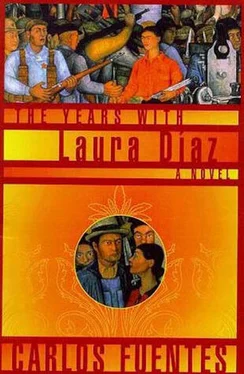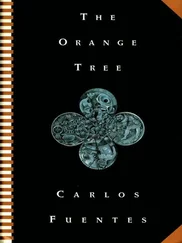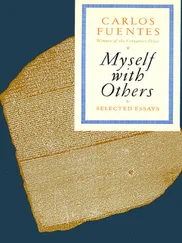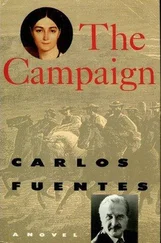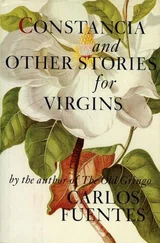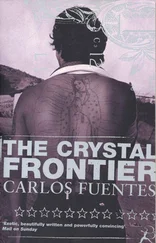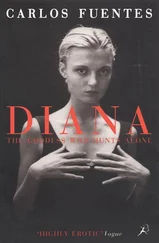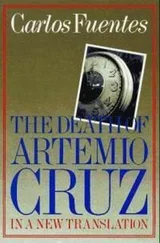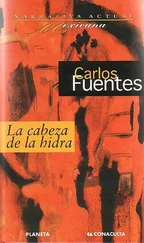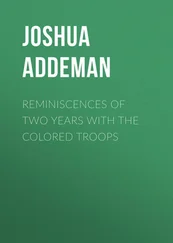She thought about the years she’d lived in Mexico City and began to superimpose Vasconcelos’ various faces on them — from the young, romantic student to the dashing intellectual guerrillero of the Revolution, to the noble educator with the interminable forehead who commissioned Diego Rivera to paint murals, to the Bergsonian philosopher of élan vital , to the Americanist of the “cosmic race,” to the presidential candidate who opposed the Maximum Chief Calles and his court jester Luis Napoleon Morones, the man who’d corrupted Juan Francisco, to the resentful exile who ended up, old and choleric, praising Franco and fascism and ordering his own books expurgated.
Vasconcelos was the mutable and dramatic image of revolutionary Mexico, and his fallen lover, Antonieta Rivas Mercado, Angel of Independence, was the fixed, symbolic supernatural image of the nation in whose name the heroes who venerated her had fought, the same ones who’d fucked her. Today, both the philosopher and his angel were in ruins, in a city that neither would recognize and that Laura went out to photograph.
Laura was sleeping differently. Before, she had dreamed without reflecting but with concern. Now there was neither reflection nor concern. She slept as if everything had already happened. She slept like an old lady.
She reacted. She wanted to sleep again as if nothing had happened, as if her life would only begin when she woke up, as if love were still a pain unknown to her. She wanted to wake up with a desire to see anew each morning and to file what she was seeing in the most precise place in her feelings, where heart and head joined forces. Before, she’d seen without seeing. She didn’t know what to do with her everyday images, the daily coins that each day put in her empty hands.
Laura Díaz began to ask herself, What will I do next year? Before, when she was young, everything was unforeseen, natural, necessary, and, despite everything, pleasant. But Frida’s death especially made her remember her own past as if it were a blurry photo. The earthquake, seeing Orlando again, and the death of Carmen made her think, Can I give the past its lost focus, its absent clarity?
The city and death woke her up. Mexico surrounded her like a great, sleeping serpent. Laura woke next to the heavy breathing of the serpent that wrapped around her but did not suffocate her. She woke up and photographed the serpent.
She had photographed Frida dead. Now she photographed the family house on Avenida Sonora before it was demolished as her son had ordered. She photographed the splintered facade and the condemned interiors, too, the garage where Juan Francisco parked the car the CROM labor union had given him, the dining room where her husband had met with labor leaders, the living room where she would wait, patient as a Creole Penelope, for the moment of grace and solitude when her husband returned home, the threshold where the persecuted nun Gloria Soriano sought refuge, and the kitchen where Auntie María de la O maintained the traditions of Veracruz cuisine — the aromas of chile chipotle, purslane, and cumin still permeated the walls. Then there was the hot-water tank fueled by yellowed newspapers where all the figures of power, crime, and entertainment were gradually consumed, where the flames devoured Calles and Morones, Lombardo and Avila Camacho, Trotsky and Ramón Mercader, the murderer Chinta Aznar and the insane rapist and murderer Sobera de la Flor, the pudgy Roberto Soto and Cantinflas, Meche Barba the rumba dancer and Jorge Negrete the singing charro , the bargains at Puerto de Liverpool and the ads that told you Betterall’s Better at Making You Better (Mejor Mejora Mejoral) and Twenty Million Mexicans Can’t Be Wrong, the great bullfighters Manolete and Arruza, the city-planning accomplishments of the regent Ernesto Uruchurtu, and the swimmer Joaquin Capilla’s Olympic medal: fire consumed them all, just as death devoured the bedroom her son Santiago transformed into sacred space, a fountain of images, a cavern where shadows were reality, and paintings and drawings piled up; and Danton’s secret room, which no one could enter, an imagined room which could just as easily be decked out with pictures of naked women torn out of the magazine Vea as be kept with bare walls as a penitence, until he found his own fortune, as he did; and the matrimonial bedroom where Laura was overwhelmed by the images of the men she’d loved, why she’d loved them, how she’d loved them.
She went out to photograph the lost villages in the great city’s misery, and there she found herself, in the very act of photographing something totally alien to her own life. She found herself because she did not deny her fear, all alone with her Leica, of penetrating a world that lived in poverty but revealed itself in crime, first a man stabbed to death on a street of unquiet dust; fear of the ambulances with the howling, deafening noise of their sirens at the very edge of the territory of crime; women stomped to death by drunken husbands; newborn babies tossed on garbage dumps; old people abandoned and found dead on mats that later were used as their shrouds, stuck in a hole in the ground a week later, their bodies so dry that they didn’t even smell. Laura Díaz photographed all that and thanked Juan Francisco, despite everything, for having saved her from such a fate, the fate of the violence and misery around her.
She would go into a tavern in a lost city and find all the men shot to death, all having inexplicably killed each other as if in a caroming series of crimes, all anonymous — but now saved from oblivion by Laura’s photographs. She thanked Jorge Maura for having saved her from the violence of ideologies, from the fear a woman might have of the world of thought he had introduced her to. In her memory she had an impossible photo — of Jorge licking the monastery floor in Lanzarote, cleansing his own spirit of ideologies and of the bloody twentieth century.
Jorge Maura was the antidote to the violence the abandoned children lived in; she photographed them in sewers and tunnels, surprising their inexpungible beauty of childhood, as if her camera cleansed them the way Jorge had cleansed the monastery floor, children cleansed of snot, rheum, greasy hair, rachitic arms, heads hairless from mange, hands discolored by pinta, the tropical skin disease, bare feet with crusts of mud as their only shoes. And when she photographed them she also thanked Harry for the weakness of loyalties and for nostalgia for the unique, unrepeatable moment of heroism. She thought about the great photograph of the fallen Republican soldier taken by Robert Capa during the Spanish Civil War.
She’d turn up at local police stations and at hospitals. No one took any notice of an old, gray-haired lady with full skirts and worn-out sandals (it was she). They let her photograph a woman, not breathing, with an empty Coca-Cola bottle jammed between her thighs, a drug addict in his cell twisted with pain, scratching the walls and stuffing saltpeter into his nose, men and women beaten in their houses or in some alley, it was all the same, bloody, blinded by disorientation more than because their eyes were swollen from punches, clubbings, the arrival of the Black Marias, the entrance into the police station of whores and fags, transvestites and drug dealers, the nightly harvest of pimps …
Lives tossed through bar doors, house windows, thrown under the wheels of a bus. Disemboweled lives, with no possible gaze on them but that of Laura Díaz’s camera, Laura herself, Laura burdened with all her memories, her loves and loyalties, but no longer solitary Laura, now instead Laura on her own, dependent on no one, returning his filial checks to Danton, punctually paying the rent for her apartment on Plaza Rio de Janeiro, first selling her individual photographs and her articles to newspapers and magazines and individual buyers, then having her first show in Juan Martín’s gallery on Génova Street, finally under contract as one more star for the Magnum agency, which also represented Cartier-Bresson, Inge Morath, Robert Capa.
Читать дальше
